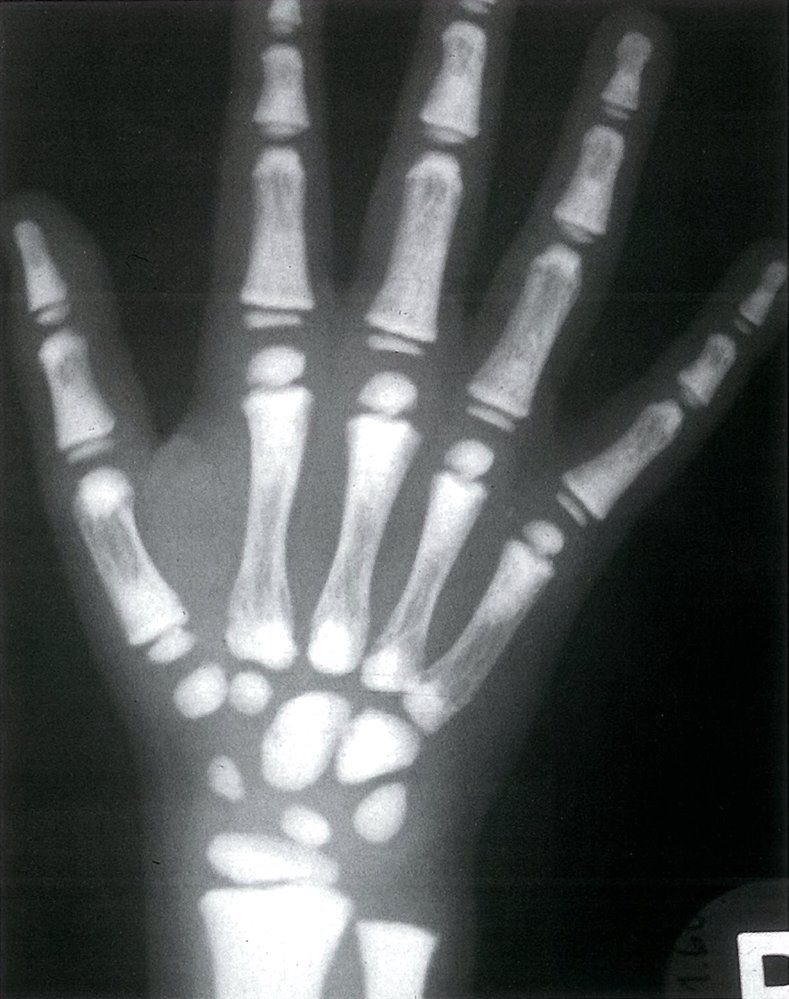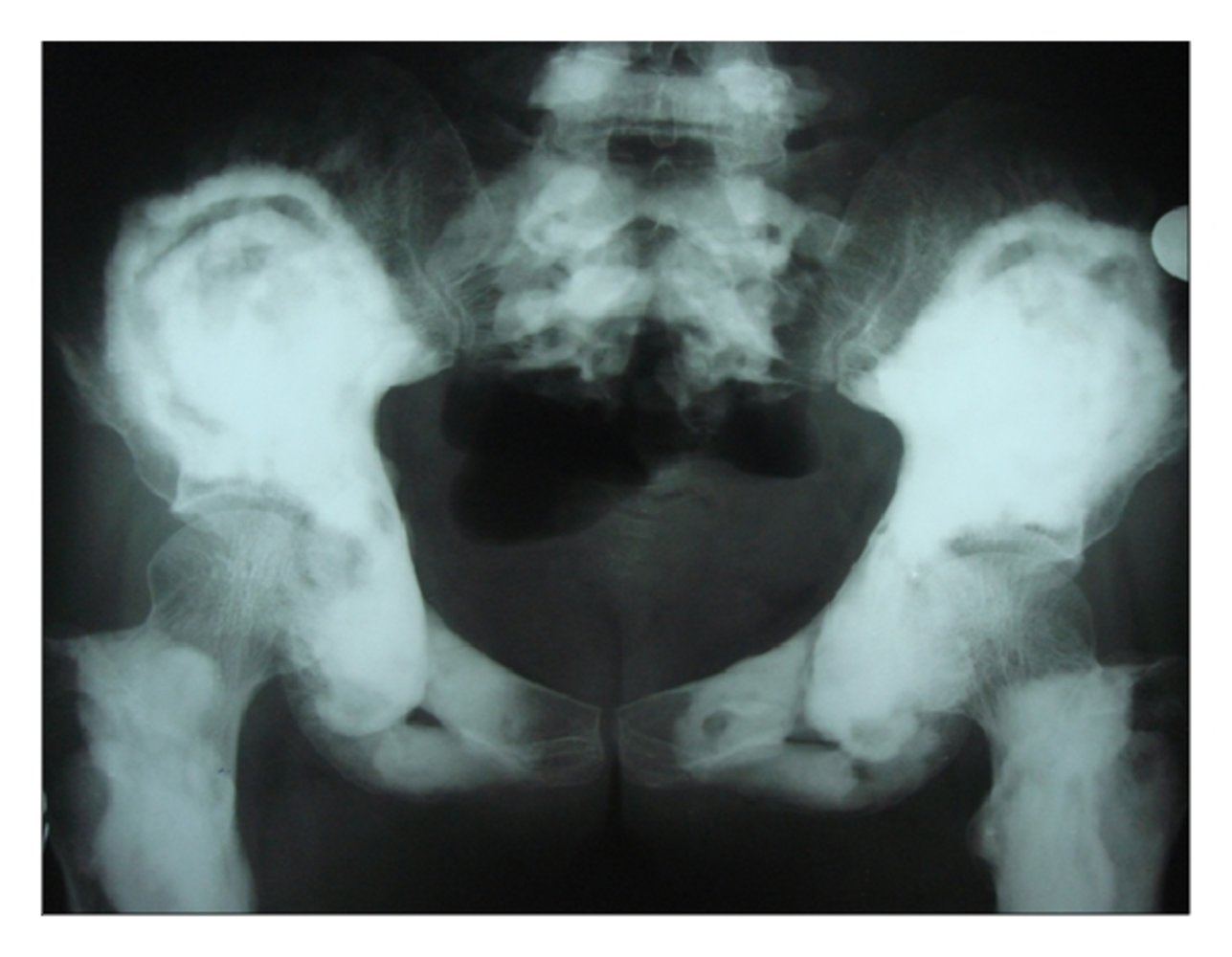- Definition: an inherited, diffuse bone disease that results in sclerotic thickening of the skeleton on radiological examination
- Etiology: infancy or early childhood
- Pathophysiology: gene mutations → inability of osteoclasts to generate acidic environment in the bone matrix → bone resorption with preserved osteoblastic function → overgrowth of bone with pathological bone composition
- Clinical features
- Recurring pathological fractures (osteopetrotic bone tissue is very dense but brittle)
- Cranial nerve disorders (e.g., palsies) due to hyperostosis and stenosis of the cranial nerve foramina
- Pancytopenia due to reduced marrow space
- Hepatosplenomegaly due to extramedullary hematopoiesis
- Diagnostics
- X-ray: symmetrical, homogenous, sclerotic thickening of both cortical and trabecular bone (stone bone)


- Calcium levels may be normal or low (especially in severe form, e.g., type I osteopetrosis).
- Therapy
- Bone marrow transplant (potentially curative treatment): Functional osteoclasts may develop from unimpaired monocytes deriving from transplanted stem cells.

